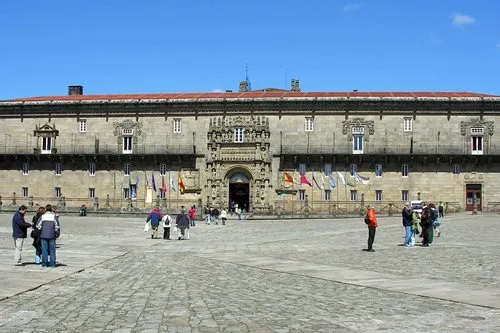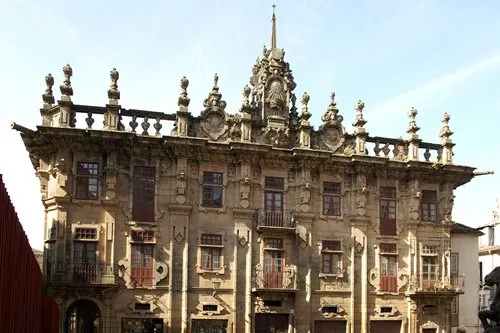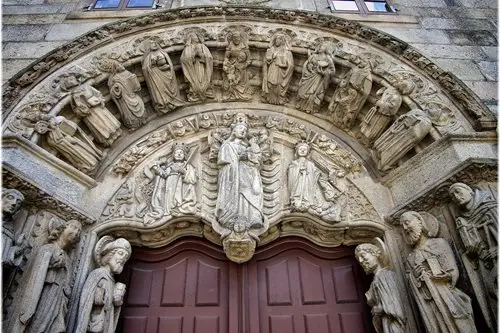
Cookie settings
We use our own and third-party cookies in order to offer our services, display videos, obtain statistics and offer personalized advertising.
For more information, please read our cookies policy.

This cathedral, that was built when Mr Diego Peláez was bishop in 1075, is the most valuable and meaningful example of the Spanish Romanesque art. The influences of the French Romanesque are represented along all the stages of the Way of Saint James that drives to the Santiago de Compostela Cathedral. In this way, St. James the Moor-slayer´ s image is born, a symbol of fight against the Islam that was spread along the route.
This cathedral has the typical plan of the pilgrimage churches: a Basilical structure with a Latin cross plan that consists of three naves just like its transept. The ambulatory is located in the apse, with radial chapels that allow surround the main altar to visit the apostle´ s tomb that is placed under the main altar.
The elevation is an architectonic good choice: round arches, alteration of pillars with cross form, with half adjacent columns and circular columns. Two huge windows correspond to each arch. A 22 meters high rostrum is placed over the side naves and the transept´ s naves in order to offset the thrust of the barrel vaults of the central nave. The thrust are covered by quarter-of-sphere vaults.
The main entrance is situated in the Portico de la Gloria that was built in 1180 by the Master Mateo. It is divided into three arches, the central one is referred to the Apocalypse with hundred of figures presided by Christ. The mullion supports the weigh of the central tympanum and is presided by a monumental image of St. James. The Master Mateo also builds the crypt that lets save the drop of the land and over it, is situated the last stretch of the naves. And the portico is situated between the two towers.
The Great Barroque facade of the Obradorio, from the XVIII Century, is a Fernando Casas y Novoa´ s work of art. Above, in the middle, the Statue of the Apostle St. James stands. In the middle, we can see the urn and the star (representing the light that the hermit Pelayo saw) between angels and clouds.
In the Platerías facade, we could stress the way the sculpture is projected from the frame of tympanum where the Redemption is represented. The divine nature is represented in the left tympanum, and the sculptures of the Jesus Christ and Apostles are the dominant element. We can see scenes of the Creation of Adam and the elegant sculpture of the King David in the jambs.
The Easterm facade or the Quintana facade has two doors. The Holy Door is dedicated to St. James and at his side are the apostles Teodoro and Anastacio. On each side of the door twenty four seated statues of the Apostles, patriarchs and prophets. The other door is the Royal Door, which name is referred to the coat of arms that stands in it.
The Northern facade or the Azabachería façade, previously called Gate of Paradise, was the entrance where the pilgrims went in. It is placed in North side of the Cathedral and it was, during many years, the main door to the temple. In the square, the pilgrims cleaned their hands and clothes. The name of this façade comes from the “azabacheros”´ association, in which material Compostela was well- known.
Address and telephone
Opening times
Prices
Free entry.
If you see any mistakes or want to add anything to this information, please contact us.
To display this map, you have to accept analytical and advertising cookies. Cookie settings.




Book your hotel